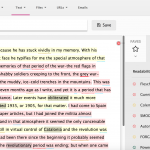I’ve talked before about my favorite talk of all time, Mike Montiero’s How Designers Destroyed the World. His talk starts with a terrifying and impactful story: a young woman in college joined the LGBTQ choir. Her choir leader added her to the group’s Facebook page, and Facebook automatically shared her joining the group on her Newsfeed. However, the young woman had not come out to her family yet. When they saw the news on Facebook, her extremely religious community at home sent her hate mail.
The moral of the story is that we, as designers, need to do better. We need to consider not only the best case scenarios, but also the worst case UX, the edge case UX, and the stress case UX.
When Montiero first gave this talk, audiences were wowed. The idea that we, as designers, might cause harm rather than good was frightening and unexpected. However, I fear that in the years since then we’ve begun to see stories like this as “other,” the sort of nightmare that happens to someone else – not to us.
A Personal Worst Case UX
To combat this idea, I’m offering a story of my own. It didn’t end my life, or cause trauma, but it was stressful, unexpected, and could happen to anyone.
I’m getting married next month. Last week I picked up my dress. I tried it on, took some photos, and sent them to my mom and bridesmaids. On Thursday, I got a text from one of my bridesmaids. “Did you know your mom posted your dress photos on Facebook?” she asked, “Isn’t that kind of a no-no?”
I immediately wrote back, saying “I bet she didn’t mean to.” (See Mom, I defended you!) I assumed my mom had been uploading photos of my nieces, and accidentally grabbed the photo of my wedding dress at the same time. But when I got her on the phone, she said she hadn’t been on Facebook all day.
After a bit of confusion, she did take the photos down. But she had no idea how any of the dress – or niece – photos ended up on Facebook. She was confused, frustrated, and a little scared – how did the app get control of her phone? How is it possible to upload photos without even opening the app?
Design for the Best Case Scenario
It turns out that my mom downloaded Facebook Memories, so that she could see more photos from the past. One of the settings in memories automatically uploads any new photos from your phone, and my mom accepted it without realizing it.
If the photos hadn’t included my wedding dress, she might have loved this new feature. It saves her time. The app automatically saves her photos online. That means she doesn’t need to worry about deleting them from the computer, and she can easily access the photos and share them with others. In the best case scenario, this is a perfect app.
The Memories app was designed for just those perfect scenarios, where grandmothers take photos of their grandchildren. It wasn’t designed for the risqué photos sent to a significant other, the inside joke photos shared with just one person, the surprise party planning photos that you don’t want the birthday boy to see, or the wedding dress photos meant for Mom’s Eyes Only.
Design the Worst Case UX
There’s plenty of advice available for how to design for the worst case scenario, or the stress case scenario, or to eliminate your own unintentional biases. It all comes down to one thing: think twice. That might mean more user testing, or more people involved in initial brainstorming, or talking through user journeys with possible future users.
When the main advice is “think about what you’re doing,” the best way to practice is to look for stories like this one. Keep up with the worst case scenarios, and remember them when you get to the drawing board.
No lives were destroyed, and I don’t mind that my dress won’t be a surprise to the handful of people who saw it during the 20 minutes it was online. It’s not a big deal. But it is an opportunity for improvement. We can reduce our everyday destructions.



Marli, What a thoughtful, thought-provoking post. Thanks for this reminder to think outside the use case. And congratulations!